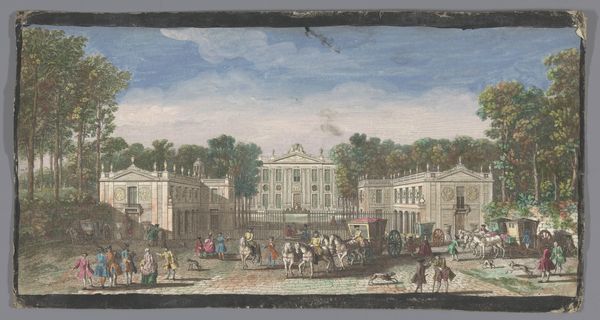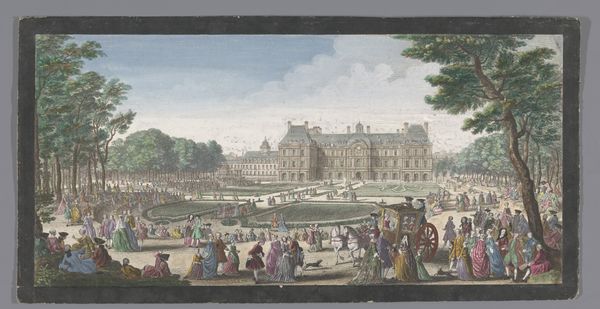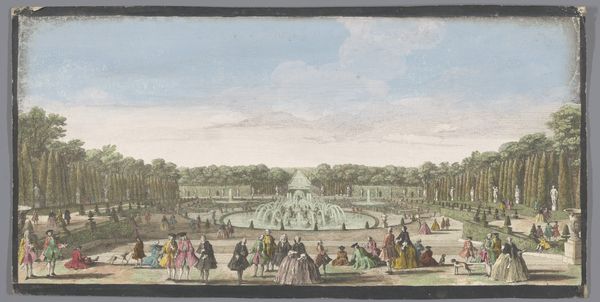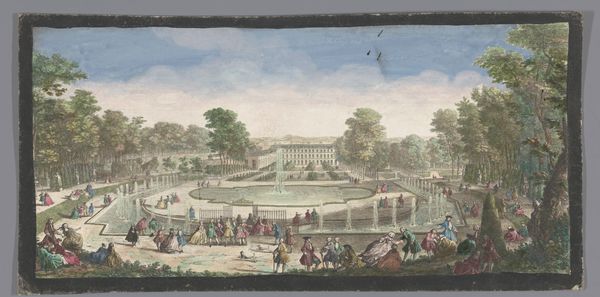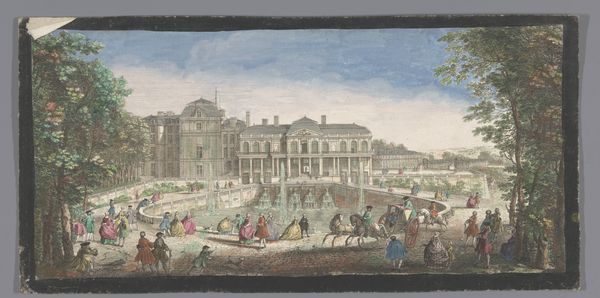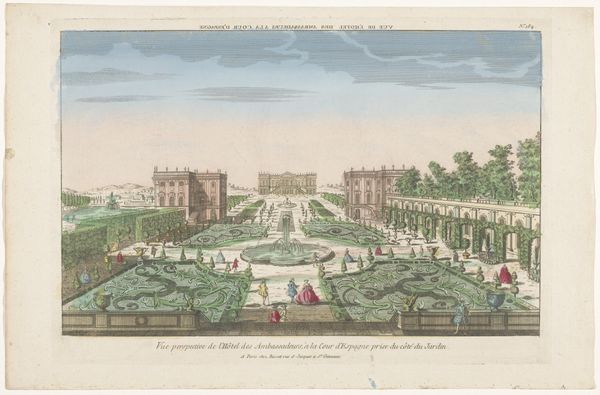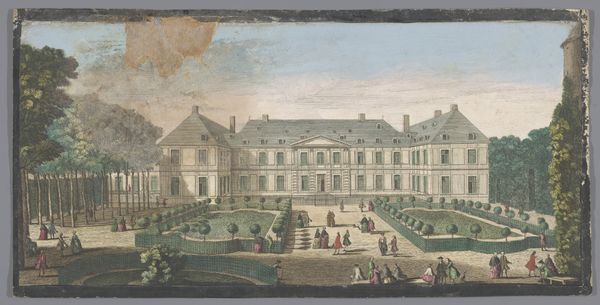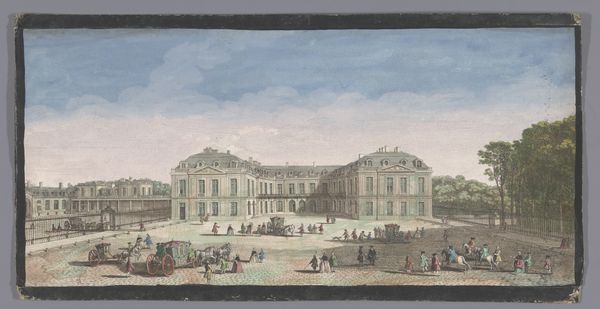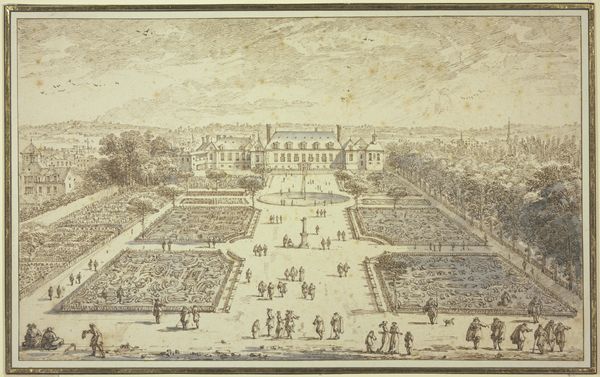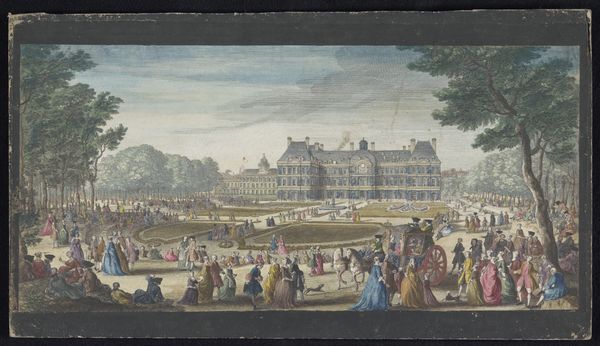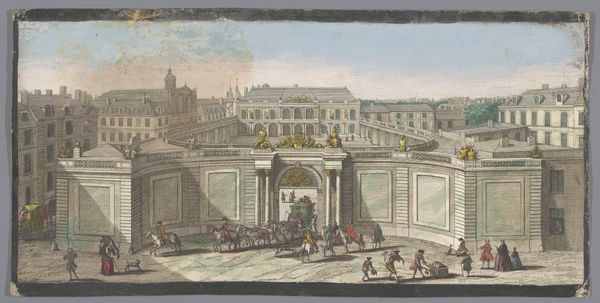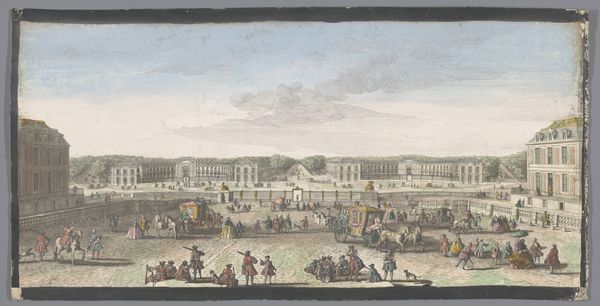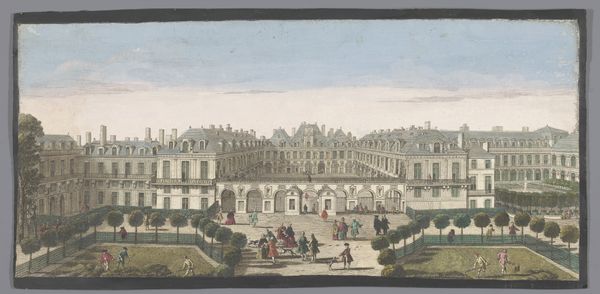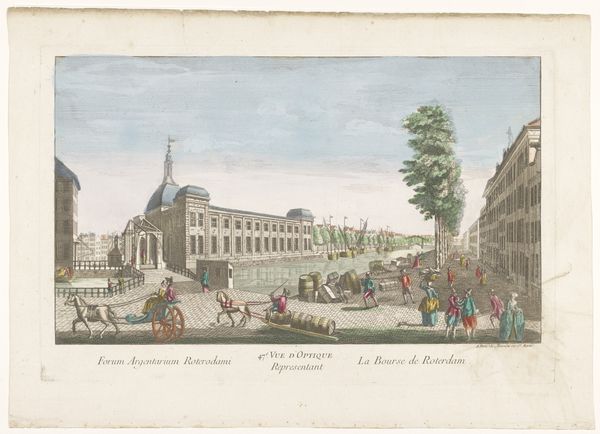
Gezicht op de kleine parterre van de tuin van het Château de Marly 18th century
0:00
0:00
watercolor
#
water colours
#
landscape
#
watercolor
#
coloured pencil
#
genre-painting
#
watercolor
#
rococo
Dimensions: height 247 mm, width 474 mm
Copyright: Rijks Museum: Open Domain
Curator: What a delightful scene. We are looking at "Gezicht op de kleine parterre van de tuin van het Château de Marly," an 18th-century watercolor now residing at the Rijksmuseum. It's an anonymous piece, which is something we might want to dig into later, in terms of art production and historical erasure. Editor: Oh, it’s like a dream! The pastel colors just melt together. It makes me think of powdered wigs and whispered secrets. Curator: That Rococo dreamscape masks a very specific power dynamic. The Château de Marly was Louis XIV’s pleasure palace, built as an escape from Versailles. This watercolour captures the perfectly manicured gardens, reflecting an obsession with control and order extending to nature itself. Editor: Control, huh? I was just getting lost in the swirls of the clouds! All that sky gives it a feeling of... freedom, almost mocking the rigid geometry below. Curator: That tension is central to understanding Rococo art. While it seems frivolous, it existed within a highly structured society. The artist’s choice of watercolor allows for a light, airy touch, yet observe how even in this medium the composition emphasises sharp angles and defined spaces. Editor: I see the figures scattered throughout, tiny human details against the grand landscape. Makes you think about their lives, their dramas unfolding in this perfectly curated world. Were they happy? Were they just pretending? Curator: That's where our understanding shifts from simply aesthetic to critically engaged. We need to examine how these genre scenes reinforce or subvert social norms. Who is included in this vision of leisure, and more importantly, who is excluded? Editor: Okay, okay, put my fantasies in check! But really, isn’t that what art's about? Getting lost in the details, the feelings...then wrestling with the bigger questions? Curator: Precisely! And by questioning these historical representations, we can start unpacking the legacy of power structures and their continued influence on contemporary society. Editor: Right. Well, I still like the wig talk better. This piece just really does it for me, I wish there was music playing, maybe harpsichord music while staring out the window... But it’s great to remember to question it all as I swoon, of course! Curator: An astute reminder. Art offers an escape, but it is one we must take critically to fully understand not only where we might wish to go, but where we have already been.
Comments
No comments
Be the first to comment and join the conversation on the ultimate creative platform.
